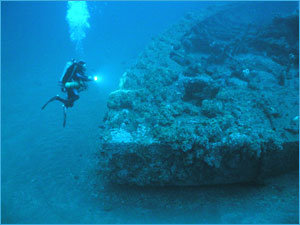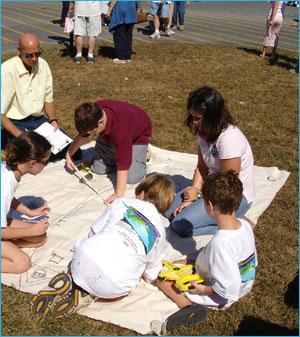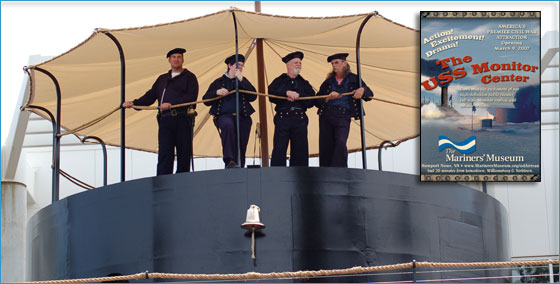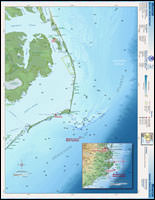 | |||||||||||||||
|
|
|
|
|

Keeping an Eye on the MonitorA summer expedition to the USS Monitor gave the public an up-close and personal with researchers studying the historic shipwreck, 240 feet below the surface. NOAA’s staff produced a 16-minute video program that describes the Monitor, sanctuary, and the technology that was used on the expedition. More than 7,000 viewers tuned in to the Intranet and local PBS stations. Archived video from the expedition serves as an excellent educational tool for those who want to peak into a part of our maritime history. Scientists also produced photomosaics of the site that will serve as a tool to track the wreck’s deterioration over time. The mission was coordinated through the National Marine Sanctuary Program, University of Rhode Island and Institute for Exploration. NOAA Data Buoy Finds New HomeWorking with the NOAA National Data Buoy Center, sanctuary staff moved a data buoy into the sanctuary that will make life easier for ocean users. The buoy records real-time data on water and air temperature, wind direction and wave height. In Spring 2007, upgraded instrument packages for tracking currents and salinity will be added. The new equipment will be very useful to fishermen in the area who will, for the first time, have access to sub-surface current information. The data collected will also be used to assist staff in monitoring conditions at the sanctuary.
Education Efforts ExpandedSanctuary staff reached more than 2,500 students and 150 teachers with information about the Monitor and the National Marine Sanctuary System at workshops and open houses held in the region. The staff continued to support regional community festivals as well, reaching more than 500,000 people through events including Norfolk Harborfest, Hatteras Day at the Docks and Delaware Coast Day. New exhibits highlighting the National Marine Sanctuary System took center stage with displays at NOAA’s Maritime Archaeology Center, Nauticus in Virginia, and The North Carolina Aquarium on Roanoke Island. Staff also installed exhibits and opened a field office at the Graveyard of the Atlantic Museum in Hatteras, North Carolina this year. Monitor Replica Christened – New Center OpensTo recognize an important part of our maritime history, program staff and The Mariners’ Museum, Northrop Grumman Newport News, and the U.S. Navy christened a full size steel sculpture of the USS Monitor. The ceremony in June highlighted how the ship will serve as an iconic centerpiece for the Museum’s $30 million, USS Monitor Center which opened in March. One of the premier Civil War attractions across the nation, the dramatic, 63,500-square-foot facility features exciting exhibits bringing visitors face-to-face with history.
Conservation Efforts Continue on Monitor ArtifactsSalt, mud, and time have taken their toll on the iron artifacts of the USS Monitor. To ensure their conservation, conservators from The Mariners’ Museum continue to excavate inside the gun turret to remove oxidized sediment. Conservators recovered several small uniform buttons, a wrought iron hand crank, and four metallic “rim fire” cartridges believed to be from a Sharp’s and Hankins breech loading rifle. The discovery of these artifacts sparked media frenzy during the summer as newspapers around the country ran the story. In 2006, NOAA and the Mariners’ Museum used the latest state of the art technologies to document the condition of artifacts recovered from the Monitor and to help scientists better understand the corrosion process that has affected those artifacts. Working with companies like CC Technologies, Fuji Film, and Optira, NOAA and The Mariners’ Museum are making great strides in preserving the historic shipwreck for future generations. Plans for 2007
and the public underway;
Sanctuary Atlas MapsNew sanctuary atlas maps depicting physical ocean and land features, other state and federal managed areas and parks, and other basic atlas features are now available on the sanctuary program Web site.
Click here to view print version. (pdf, 660K) |
|
||||||||||
|
|||||||||||||||






